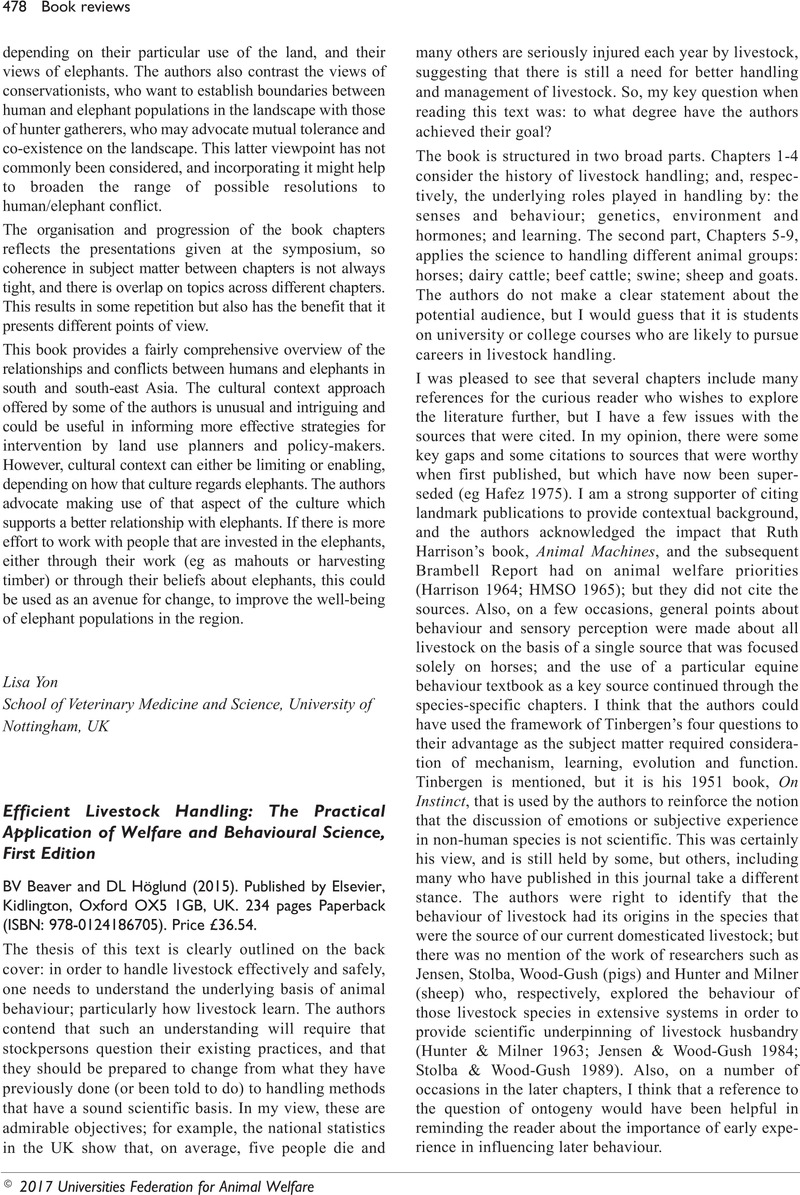No CrossRef data available.
Article contents
Efficient Livestock Handling: The Practical Application of Welfare and Behavioural Science, First Edition BV Beaver and DL Höglund (2015). Published by Elsevier, Kidlington, Oxford OX5 1GB, UK. 234 pages Paperback (ISBN: 978-0124186705). Price £36.54.
Review products
Efficient Livestock Handling: The Practical Application of Welfare and Behavioural Science, First Edition BV Beaver and DL Höglund (2015). Published by Elsevier, Kidlington, Oxford OX5 1GB, UK. 234 pages Paperback (ISBN: 978-0124186705). Price £36.54.
Published online by Cambridge University Press: 01 January 2023
Abstract
An abstract is not available for this content so a preview has been provided. Please use the Get access link above for information on how to access this content.

Information
- Type
- Book Reviews
- Information
- Copyright
- © 2017 Universities Federation for Animal Welfare
References
Hafez, ESE 1975 The Behaviour of Domestic Animals, Third Edition. Baillière Tindall: London, UKGoogle Scholar
Harrison, R 1964 Animal Machines: The New Factory Farming Industry. Vincent Stuart Publishers Limited: London, UKGoogle Scholar
HMSO 1965 Report of the technical committee to enquire into the welfare of animals kept under intensive livestock husbandry systems. HMSO: London, UKGoogle Scholar
Hunter, RF and Milner, C 1963 The behaviour of individual, related and groups of South Country Cheviot hill sheep. Animal Behaviour 11: 507–513CrossRefGoogle Scholar
Jensen, P and Wood-Gush, DGM 1984 Social interactions in a group of free-ranging sows. Applied Animal Behaviour Science 12: 327–337CrossRefGoogle Scholar
Mason, G and Mendl, M 1993 Why is there no simple way of measuring animal welfare? Animal Welfare 2: 301–319Google Scholar
Stolba, A and Wood-Gush, DGM 1989 The behaviour of pigs in a semi-natural environment. Animal Production 48: 419–425Google Scholar

